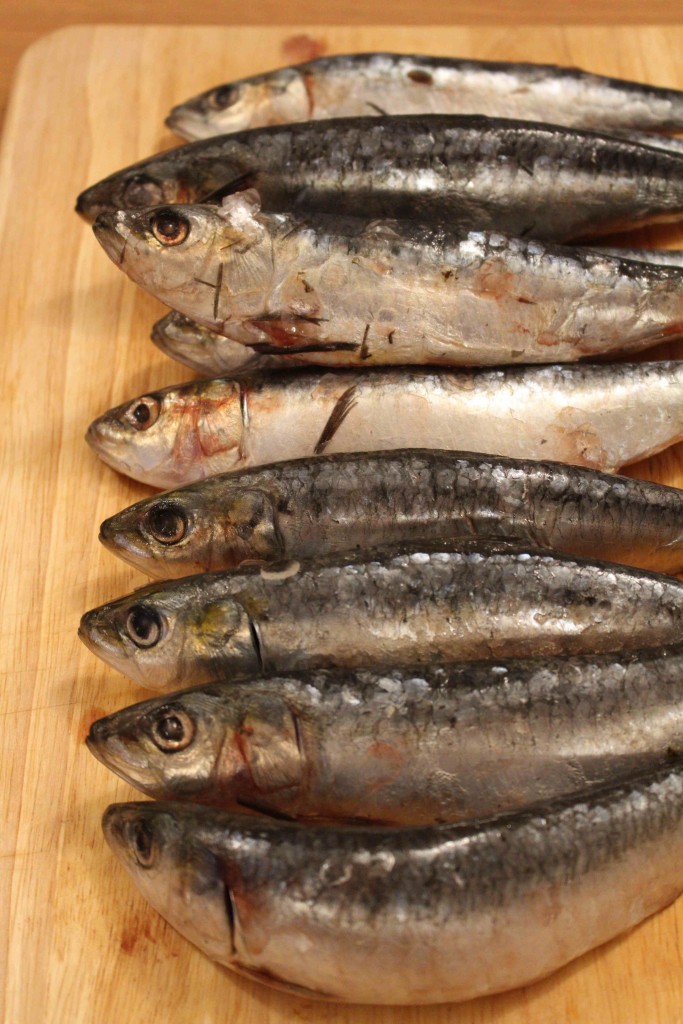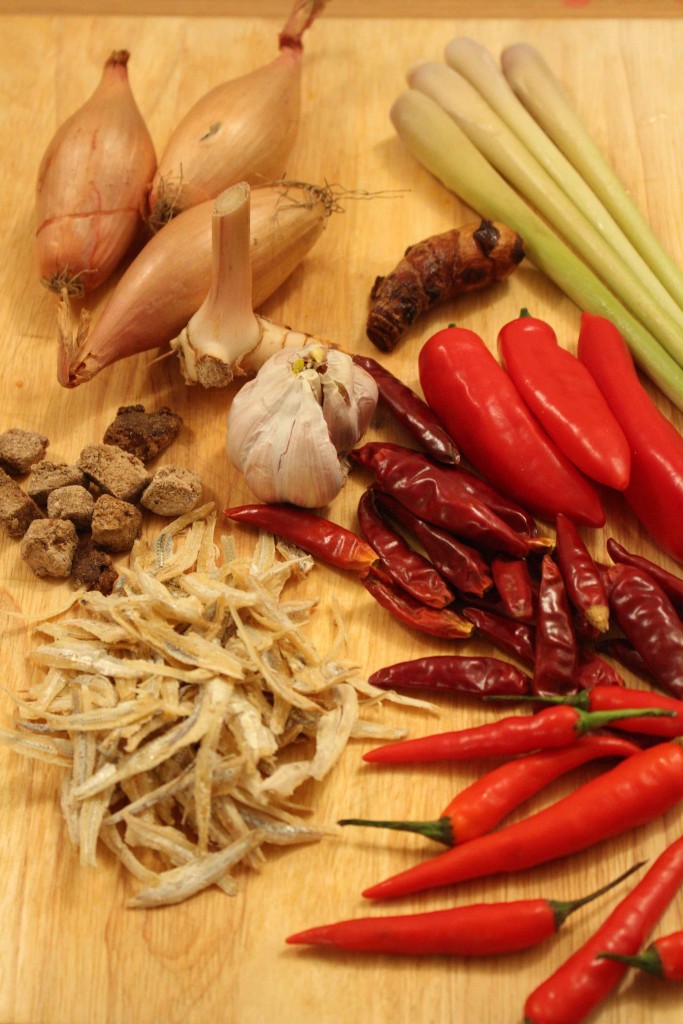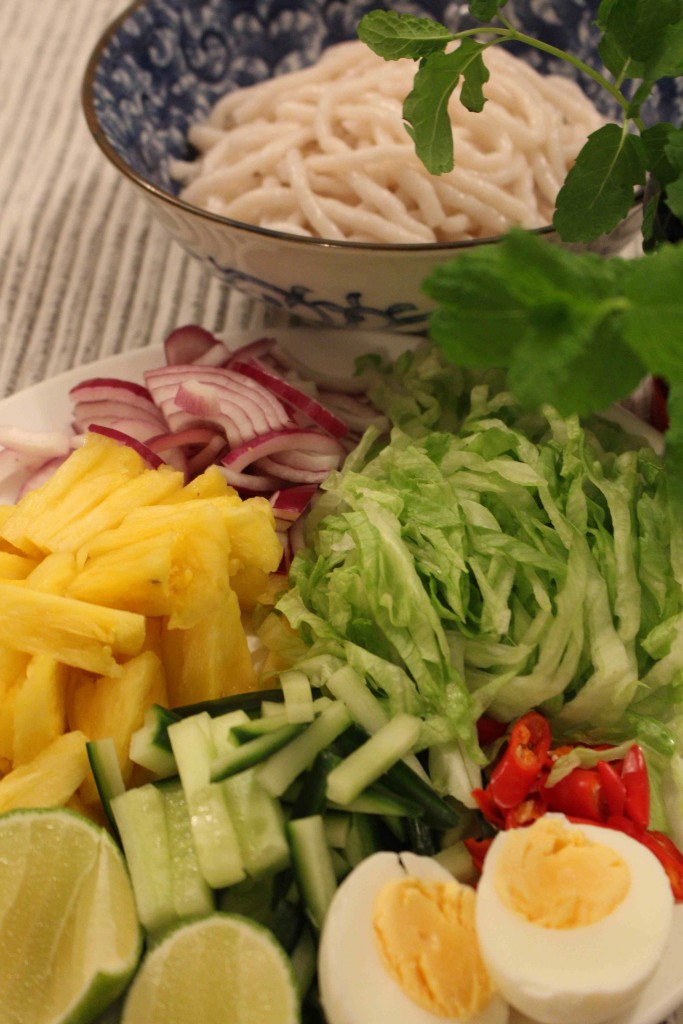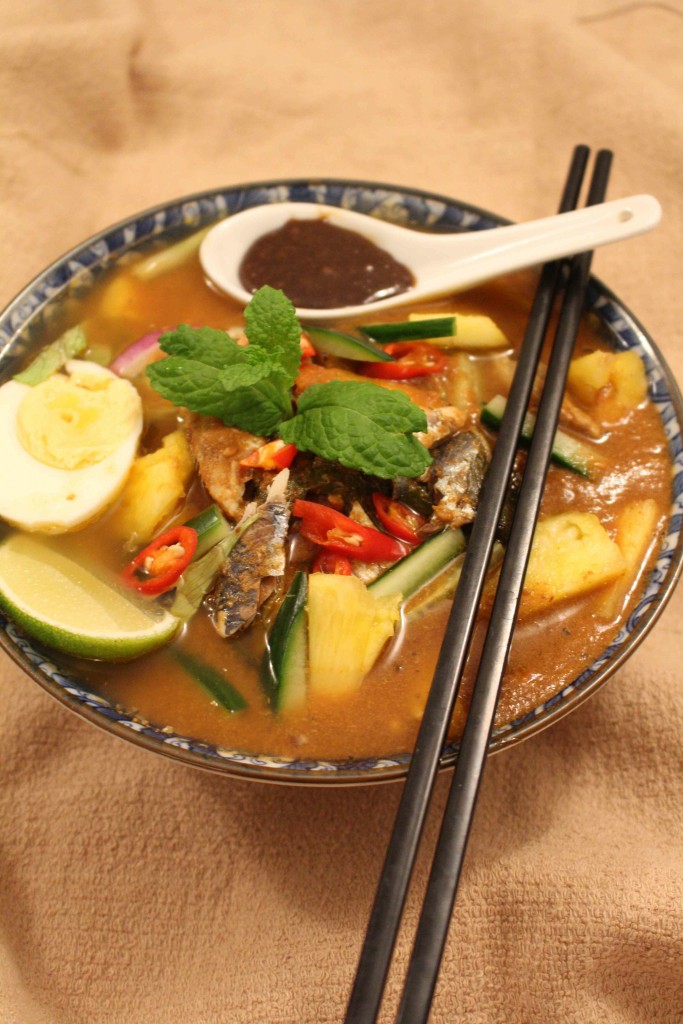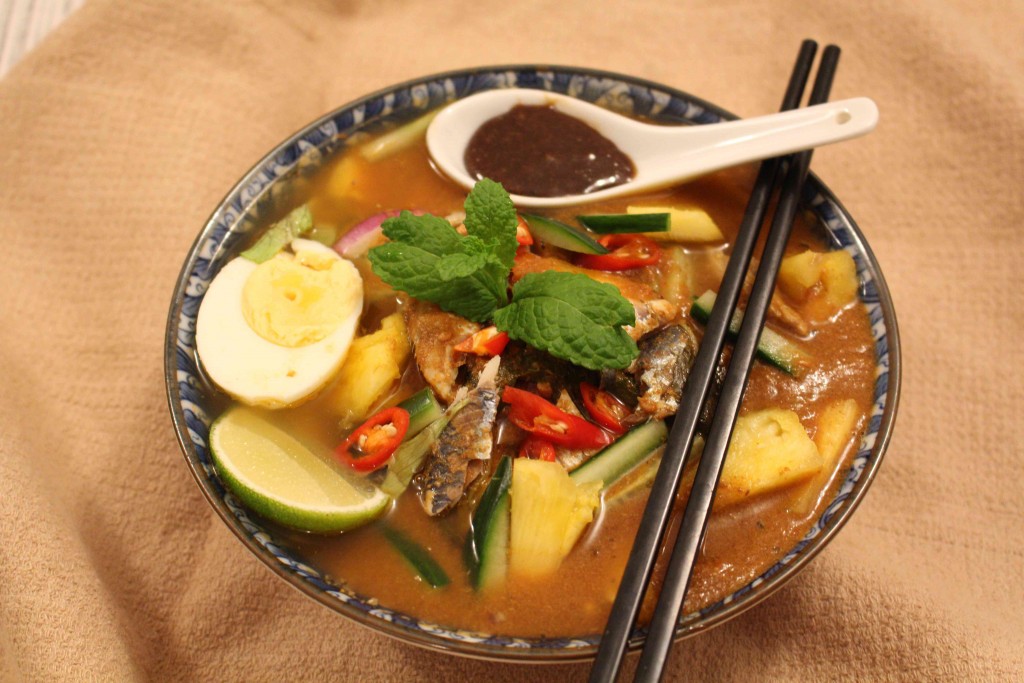I love a good bowl of Asam Laksa. The rice noodle in hot and tangy fish broth is comfort food to me like what shepherd’s pie is to the English.
Asam Laksa uses a lot of tamarind, both tamarind paste and tamarind peel, hence its name (asam is tamarind in Malay). The use of asam, together with the other herbs is to mask the fish smell of the broth but also to add a distinct taste and fragrance to the dish.
There are a few Malaysian restaurants in London offering Asam Laksa on their menu but nothing beats the satisfaction of making your own at home.
Please don’t get put off by the long list of ingredients. Trust me, it’s relatively easy to make. In London, trying to source the ingredients is the hardest part to making a home-cooked Asam Laksa. Despite having two oriental stores nearby my flat, I’m still missing two ingredients: torch ginger and calamansi limes. I’ll just have to make my laksa without them. Where possible, I’ll list down substitutes below so that you don’t have to make a trip to the next town just to get hold of ingredients such as polygonum. What IS polygonum? We’ll get to that in a minute.
Now lets get cracking. You will need:
- 1 kg fresh sardine, cleaned: gutted and scaled
- 1 small chunk tamarind paste (asam jawa) to make about 5 tbs of tamarind paste
- 10 tamarind peel (asam keping/asam gelugor)
- 10 stalks polygonum/Vietnamese coriander (daun kesom)
- 1 torch ginger (bunga kantan), halved (if using)
- 8 cups water
- salt and sugar to taste
- laksa, pre-cooked
For the spice paste:
- 10 dried chillies
- 10 fresh chillies
- 3 shallot
- 3 garlic cloves
- 3 stalks lemongrass (serai) (white part only)
- 2 inches galangal (lengkuas)
- 1 inch fresh turmeric (kunyit)
- 1 handful dried anchovies
- 1 inch cube belacan
For the garnishing:
- cucumber, julienned
- pineapple, julienned
- lettuce, thinly sliced
- red chillies, thinly sliced
- onion, halved and thinly sliced
- torch ginger, quartered and thinly sliced (if using)
- mint leaves
Condiments:
- lime (calamansi limes, halved if you can get hold of them)
- sweet shrimp paste (petis)
- hard boiled eggs, halved
Method:
Pour water into a big pot and bring it to a boil. Add the fish and reduce the heat to medium. Let it simmer until the fish is cooked. This may take about 10 – 15 mins. Once cooked, turn off the heat and transfer the fish to a bowl to let it cool.
Strain the fish broth and add it back to the big pot.
Grind the spice paste ingredients to a fine consistency.
At this point, the fish should have cooled to a point that you can handle it. Pick the flesh out and put it to one side. Don’t discard the bones and the heads – they are full of flavour. Put them in a blender, add some water (or the broth if you don’t want to dilute further the broth) and blend them to a fine consistency. This is where I LOVE my trusted Vitamix.
Strain the liquid into the big pot of fish broth.
I like to blend about half of the fish flakes and add them to the fish broth to add thickness to the overall consistency.
Add the blended spice paste into the pot along with the polygonum, torch ginger (if using). Add in also the tamarind paste and tamarind peel. Put the pot to medium heat and bring it to a boil. Then, reduce the heat and leave it to simmer for another half an hour until you get the desired consistency. Add the fish flakes and salt and sugar to taste.
If you need to adjust the salty/sour combination to your liking, add a little bit more salt and tamarind. If you’ve added too much tamarind, add a little bit of sugar to balance the taste.
To plate up, in a bowl, add the pre-cooked laksa. Add the garnishing on top. I like to leave the mint leaves and the sliced chillies (and the sliced torch ginger, if using) out for now. Pour the fish broth and then only add the mint leaves and sliced chillies (and torch ginger). Serve straight away with a spoonful of shrimp paste, the hard boiled egg and a lime wedge on the side.
A great comfort food on a cold rainy day like today (or any day really!).
—
Substitutes:
- Indian mackerel (ikan kembung) is probably the most commonly used in Asam Laksa. Alternatives are usually sardine, which is what I am using today, or yellowtailed mackerel (ikan selar) or Spanish mackerel (ikan tenggiri). If you have the patience to pick the flesh out of this fish, wolf herring (ikan parang) is a good choice. I have also tasted some asam laksa made from tuna which is probably easier sourced here in London. (Psst: Here’s a little secret. You can even use canned sardine – with its tomato sauce and all! That recipe probably needs to get a separate post).
- Most of the ingredients for the spice paste can be sourced from your local oriental store. If you can’t get dried chillies, I would suggest you use chilli powder instead. Mix it with a bit of water to make a paste. And if you can’t find galangal, fresh turmeric and dried anchovies, leave them out. But belacan is an important ingredient that gives the broth its pungent taste. Unfortunately, I don’t know of an alternative.
- Most of the garnishing can be sourced from your nearby supermarket or grocery store with the exception of torch ginger. Whilst the best Asam Laksa is infused with the aromatic torch ginger, leave it out if you can’t find one.
- Nowadays, I can even find tamarind paste at Waitrose and most oriental stores would have tamarind peel. If you really can’t find either one or both, the best alternative would be lots of lime juice.
- As you can see, I can’t get hold of calamansi limes so I have substituted them with normal key limes that you can easily get from the supermarket.
- Polygonum is an herb also typically known as Vietnamese coriander. Your local oriental store normally carries it. Personally, I love this stuff and would not do my Asam Laksa without. If however, you really can’t get hold of it, substitute with fresh mint sprigs.
- Laksa is thick rice noodles and has a chewy texture. I’ve seen it in some oriental stores but as an alternative, you can use thick rice vermicelli. I know udon is made from wheat flour but I think it could be a good alternative given it has a similar chewy texture.
